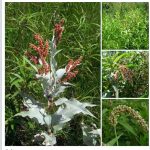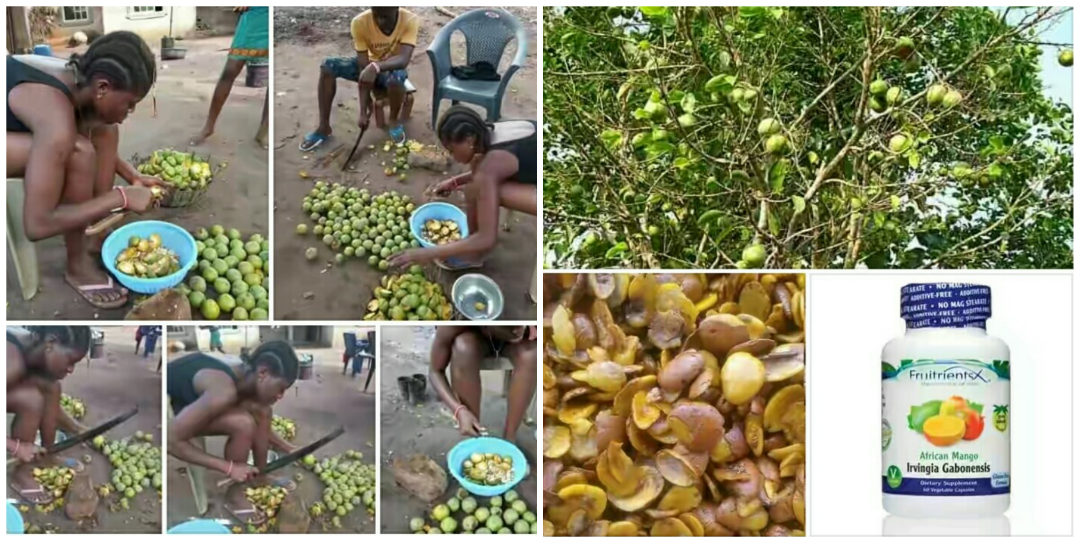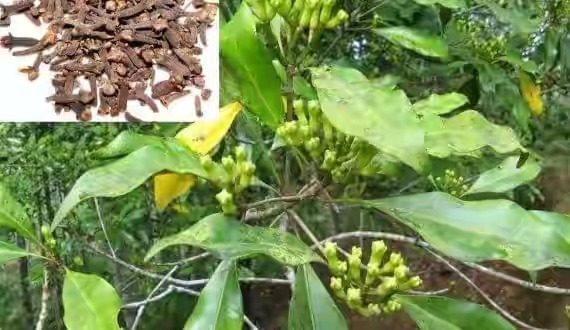Persicaria senegalensis (Meisn.) Soják; synonym: Polygonum senegalense Meisn. (1826) (Botanical name) or Silver snake root (English) or Furfura, Bafure, Kafula, Farar Kafula, Rimin Kada (Hausa): An edible perennial herb with medicinal properties
DESCRIPTION AND OCCURRENCE: The Furfura plant is a robust, erect perennial herb to 3 m, sometimes rooting at the lower nodes. Leaves alternate, oblong-lanceolate, 8-28 cm long, long pointed at the apex and narrowing into a petiole at the base, green and almost hairless in the regular form but covered with small yellowish glands on the lower surface; petiole 1-5 cm long. Stipular sheaths reddish-brown, membranous, up to 3.5 cm long, usually without cilia. Flowers in multiple dense terminal racemes, often showing as pale sandy brown. Perianth 3-4 mm long, rose-pink, greenish or white. Silver snake root is widespread through most of the continent of Africa and also in Madagascar. It can be found by lakes and riversides; other damp places, marshes, often growing in water; locally common; at elevations from 45 – 3.000 metres.
USES/HEALTH BENEFITS OF PERSICARIA SENEGALENSIS
Furfura is cultivated in China, Japan and Korea (also as crop on larger fields); formerly occasionally grown in Europe (Ukraine) and the Caucasus area. From the leaves after fermentation, a blue dye is obtained (Chinese indigo), which is especially used for dyeing cotton. Stem parts are used for green manuring (Jap. kuko sukumo). In Korea, it’s also a medicinal plant. THE TENDER LEAVES OF PERSICARIA SENEGALENSIS ARE EATEN COOKED AS A VEGETABLE. A chemical analysis of the leaves of Persicaria senegalensis is not available, but the nutritive value may be similar to that of Persicaria decipiens (Geron tsuntsu in Hausa). Therefore, per 100 g: water 80.0 g, energy 268 kJ (64 kcal), protein 3.6 g, fat 0.3 g, carbohydrate 14.7 g, fibre 3.5 g, Ca 150 mg, P 46 mg. Consequently, one can say the plant is rich in dietary fibre and calcium. Only in times of drought it is grazed by livestock. In Kenya and DR Congo, the plant is burnt to make a vegetable salt.
In Senegal, a leaf decoction is taken in draught and by enema to treat syphilis in a mixture with other plants. In Nigeria and Ethiopia, pounded leaves are applied to swellings, syphylitic sores or skin affections; in Tanzania, pounded roots are used in the same way. The plant is also used as a veterinary medicine in Madagascar and elsewhere. In Tanzania, a black dye is prepared from the roots. Persicaria senegalensis has potential as an aquatic ornamental. A crude water extract of the plant was found to kill the freshwater snails Lymnae natalensis and Biomphalaria pfeifferi, and so may be of value in controlling certain water-borne diseases.

FOR FURTHER READING SEE:
1. Burkill, H.M., 1997. The useful plants of West Tropical Africa. 2nd Edition. Volume 4, Families M–R. Royal Botanic Gardens, Kew, Richmond, United Kingdom. 969 pp.
2. Hedberg, O., 2000. Polygonaceae. In: Edwards, S., Mesfin Tadesse, Demissew Sebsebe & Hedberg, I. (Editors). Flora of Ethiopia and Eritrea. Volume 2, part 1. Magnoliaceae to Flacourtiaceae. The National Herbarium, Addis Ababa University, Addis Ababa, Ethiopia and Department of Systematic Botany, Uppsala University, Uppsala, Sweden. pp. 336–347.
These are the thoughts of:
Sa’eed Halilu Bawa
Senior Lecturer (Associate Professor) at University of the West Indies, St. Augustine Campus, Trinidad.
Studied Food and Nutrition Sciences, Dietetics at Kaduna Polytechnic, Nigeria; Warsaw University of Life Sciences, Poland.























